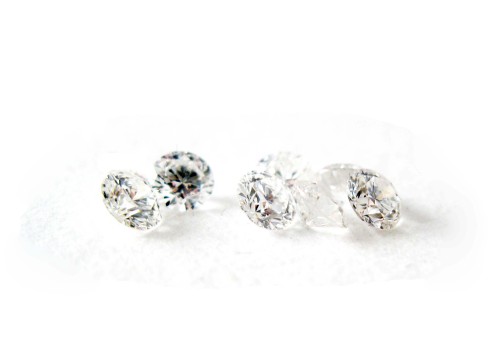 Why Buy a Diamond?
Why Buy a Diamond?
Diamonds have been the popular favorite for an engagement ring for hundreds of years. The beauty and brilliance of a diamond are relatively unmatched, while its absolute hardness ensures value that can last through a lifetime and be passed on to future generations. Many of our customers inherit diamond jewelry from a parent or grandparent, enabling them to breathe new life into old stones by resetting them in custom pieces with modern style.
Lab Grown Diamonds
As technology has improved and prices have come down, we’ve begun stocking some laboratory grown diamonds. These are molecularly identical to natural diamonds, at about half the price. All lab grown stones have microscopic engravings on the girdle denoting them as such, and a full range of sizes and shapes is available. If the social or environmental implications of diamond mining concern you these are an excellent alternative…just as brilliant, beautiful, and durable as their natural counterparts.
Choosing a Diamond
The two most important factors in making a diamond purchase are usually price and appearance. Remember this: the size of a diamond has absolutely nothing to do with how much you love your partner. Buy the best diamond you can find in your budget and they’ll love it.
Price
You may not believe this, but there are few bargains to be found in diamond pricing. The wholesale cost of diamonds is fairly consistent across the board for all retailers. Volume retailers, like department stores or chain jewelry stores, rely on marketing huge quantities of (typically) lower quality stones. Your best bet for purchasing a really fine diamond is with a custom jeweler, one whose income is not dependent on raw sales, but on craftsmanship, design, and goldsmithing. Jewelers who set each stone individually, by hand, tend to be a lot pickier about the stones they select than volume outlets are.
These are some things to watch out for in diamonds with suspiciously low advertised prices:
Color: Look at the stone in different light sources. If the stone is loose, view it in a crease of white paper. Compare multiple stones with different color grades to get a feel for the scale.
Cut: A stone that is poorly cut will look less brilliant. Diamonds are often cut either too deep or too shallow. The girdle of the stone may be overly thick or, conversely, as thin as a knife edge, compromising its durability. Make sure to compare several stones in the same location and lighting. Even “ideal cut” diamonds vary quite a bit in make. When the proportions of a diamond fall within certain parameters, there is a better chance that the correct balance will be achieved, resulting in a truly brilliant stone. Educate your eye. If one diamond has incredible brilliance and flash to your eye, look at others and then come back to it.
Clarity: Badly flawed or heavily “included” diamonds do not sparkle as well as higher quality ones, and sometimes, when the inclusions are large enough, the stone can be structurally compromised. Diamond, while practically unscratchable, is not at all unbreakable. Many diamonds that we see in old jewelry have small chips out of the girdle. Mostly, though, too many internal inclusions compromise the brilliance, dispersion, and scintillation of a diamond. Ask to look at all stones with magnification, and examine them carefully.
Clarity enhancement: This is rare. Diamond retailers are required by law to disclose any artificial treatment of diamonds they sell. Diamonds that have flaws or fissures that come to the surface of the stone can be filled with a glassy substance to improve the appearance of the stone. The problem with clarity enhanced diamonds is the glassy filler can be accidentally damaged by heat or ultrasonic cleaners, negating the treatment. Most custom jewelers avoid clarity enhanced diamonds altogether. If you have any doubt about the diamonds you are looking at, be sure to ask. There are no clarity enhanced diamonds at River Jewelry.
Certified Stones
Many retailers sell diamonds with a certificate of authenticity from a laboratory, describing the diamond’s color, clarity, and cut. The most reliable certificates are from GIA and AGS. If you are looking at a diamond with a certificate from any other laboratory, be careful! Their grading might not be as rigorous. Examine the stone carefully with a loupe or microscope, and ask to compare it with diamonds with certificates from GIA or AGS. Standards can vary wildly among other labs.
The best way to learn about diamonds is to come into our store. We can explain how diamonds are graded for color, clarity, and cut, and illustrate with a variety of stones in our inventory. You can learn a lot in fifteen or twenty minutes.
